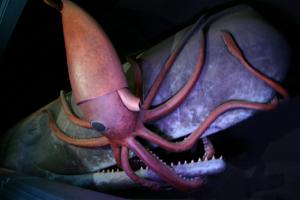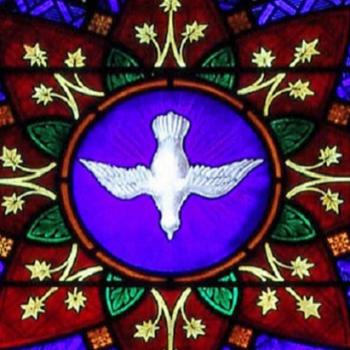On the fifth day of the Genesis creation narrative (Genesis 1:21), we are told that God created the “great sea monsters” (tanninim). While some see these creatures as “monsters” or mythological creatures, like the NRSV does, my default setting is to see them as real. Which leads to the question, “What exactly were they?”

This is not to say that the term tannin is never used mythologically. There is actually a range of creatures to which this term refers. In the Hebrew Bible, it refers five times to serpents (Exodus 7:9, 10, 12; Deuteronomy 32:33; Psalm 91:13), the clearest being where Moses turns his staff into a serpent. But all of these verses clearly refer to a dry-land context. In Psalm 148:7, the creatures appear to be marine, the same as in Genesis 1:21.
Curiously, the Septuagint translates tannin as drakōn, “dragon,” everywhere except Genesis 1:21. In Genesis, context seems to be what leads the Greek translation to use the word kētos, a word often rendered “whale,” but whose semantic range covers all sorts of sea “monsters.” The Liddell-Scott lexicon of ancient Greek defines kētos as “any sea-monster or huge fish.” Aristotle refers to “the delphis (dolphin), the phalaina (whale), and the rest of the kētē” (plural of kētos). In Homer’s Odyssey, the term is used for “seals.” Kētos is used three times in the Septuagint to refer to mythological chaos monsters in Job, and it is used for the “great fish” (dag gadol) in Jonah (and as cited in a quote from Jesus in Matthew 12:40).
Going back into Ugaritic, the Canaanite ancestor of the Hebrew language, the tnn root is mythological. It is used the same way in Isaiah 27:1 and 51:9, where the tannin is paired with Rahab and Leviathan (Ugaritic Ltn). In Canaanite culture, these were divine “chaos monsters.” In Isaiah, these are demythologized characters like our Mother Nature. But underneath these characters must be real biological prototypes; indeed, the Leviathan of Job 40 has been hypothesized to be the crocodile “on steroids.” So what creature lies behind the tannin?
Because the linguistic root gives us no further clues, all we can do is make a few careful guesses. One strong candidate, in my opinion, is the sea creature that the Assyrians called the nahīrū. (See https://www.academia.edu/2258864/The_Hunt_is_on_again_Tiglath-pileser_I_s_and_A%C5%A1%C5%A1ur-bel-kala_s_n%C4%81%E1%B8%ABir%C5%AB-Sculptures_in_Assur_in_H.D._Baker_K._Kaniuth_A._Otto_eds._Stories_of_Long_Ago._Festschrift_f%C3%BCr_Michael_Roaf._Alter_Orient_und_Altes_Testament_397_M%C3%BCnster_2012_323-338) Two Assyrian kings boasted that they caught one of these creatures, which they nicknamed the “horse of the sea.” Because one Assyrian king says he received “horns” or “teeth” (Akkadian šin) from this creature as tribute, it could have been a narwhal (as suggested by Assyriologist Leo Oppenheim), although today the narwhal exists only in the Arctic. It also could have been a swordfish. The Ugaritic Textbook identifies this creature (anhr) as a dolphin, but in the one Canaanite text where it is used (KTU 1.5.I.15), it is paired with “the lion of the wild;” a dolphin hardly seems to fit as a lion’s ocean counterpart. The meaning of nahīrū seems to be “blower” or “snorter” (connected to the word for “nostril” in Job 41:20 = 41:12 in the Hebrew), pointing to some sort of monstrous sea mammal. The sperm whale and the orca have also been prominently suggested.
One more wild suggestion: because the Hebrew tannin seems to be a serpent when it refers to a land creature, might it be a giant squid when it refers to a sea creature? We may never know. Perhaps the word is meant to point us to a whole category of monstrous sea creatures. But my conviction is that Genesis 1:21 is not talking about some mythological chaos monster. No, the creatures in question (plural) were created-out-of-nothing by God (bara’), and God declares them to be “good.” Which means that they are highly unlikely to be mythical personifications of chaos.












